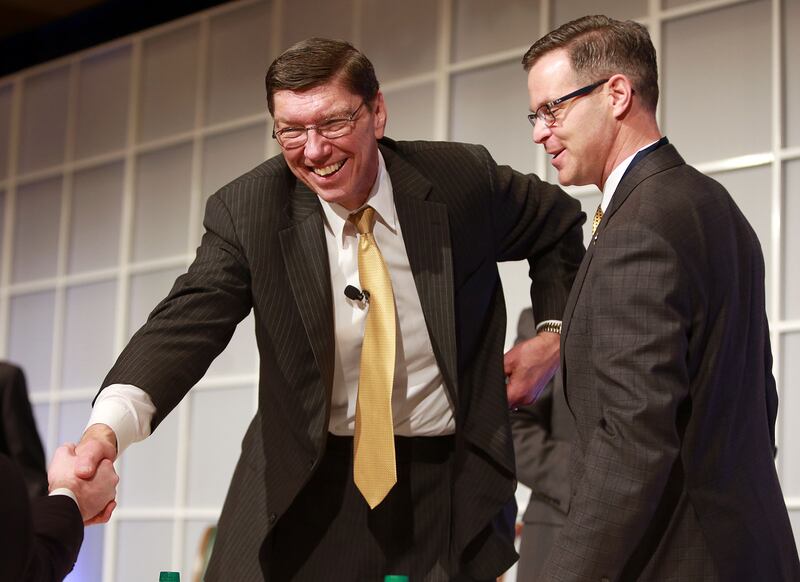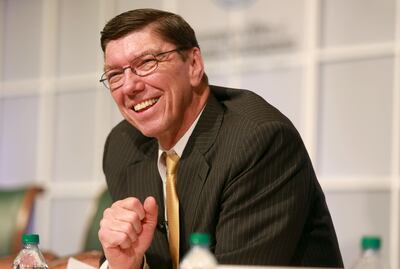Many wonderful tributes have poured in over the past few days honoring the life, work and legacy of Clayton Christensen. His revolutionary work on the principle of disruptive innovation, his lectures with Harvard Business School students and the strategic consulting he provided organizations around the world have had a profound impact on tens of thousands, if not millions, of people.
Lost in the talk of disruption, however, is the purpose for which he applied the principle. He simply wanted to empower individuals and organizations to break down barriers, break through limiting beliefs, break with conventional thinking and ultimately discover, or rediscover, the essence of the organization or the authentic self of the individual. That is where innovation happens.
The uninhibited organization and the empowered individual — freed from personal ego or puffed-up institutional pride — can embrace and propel innovation. Untethered from inhibiting beliefs or constraining structures, innovation is unleashed to explore and deliver transformational discoveries and game-changing results.
Christensen understood that the power of innovation would frighten those in control of, or clinging to, power. For him, exposing the fatal flaws, cracks in character and the willingness to defend the defenseless — including poor performance, mediocrity and the status quo — were critical drivers of disruptive innovation.
Companies spend vast amounts of time and resources on efforts that run counter to disruptive innovation. Organizations often have people more committed to building their own kingdoms, complete with castles and moats, than driving the company forward. Others polish up and reinforce shiny department silos, always making sure their own resources are preserved to control messaging, cover failures and ensure they can take and get credit for what they do. Christensen spent his career convincing leaders to break out the bulldozers, swing the sledgehammers and dig deep in order to challenge everything and open the way to innovation.
Christensen regularly reminded leaders that the goal of disruptive innovation is to remove everything that isn’t essential or that which stands in the way of the core and center of the organization or individual.
Why including “individual” along with “organization” in discussing disruptive innovation? What does the individual have to do with all of this? I am convinced that applying individual disruptive innovation is the secret sauce in Clayton Christensen’s most extraordinary life.
Christensen knew that the disruption in any company or institution would create space for transformative innovation emanating from the essence of the organization’s mission and vision. He understood this was also true for individuals. He understood it because he lived it.

On the Harvard Business Review website, Christensen’s “How Will You Measure Your Life?” is still one of the most downloaded articles. It led to his landmark book of the same title. In it Christensen writes, “I came to understand that while many of us might default to measuring out lives by summary statistics, such as number of people presided over, number of awards, or dollars accumulated in a bank, and so on, the only metrics that will truly matter to my life are the individuals whom I have been able to help, one by one, to become better people.”
Disrupting the work of counting dollars, titles and possessions creates space for the essence of the soul, and all that truly matters, to be revealed — first to the individual and then to the world.
The individual must also break down the walls of stereotypical titles and the silos of self. For Christensen, there was no barrier between his spiritual self and his professional self — no walls, no boxes of bits and pieces of his life wrapped up nice and neat, no elements that were only trotted out on Sundays or holidays, no part of his character preserved just for lectures. He was congruent and able to tap his essential, innovative goodness in the classroom, boardroom or livingroom with ease.
Christensen brought his whole, authentic self everywhere he went, so the wellspring of innovation was always with him. Even in the middle of the secular and scholarly world of Harvard, Christensen regularly and boldly declared his beliefs to believers and nonbelievers. Because his message was not a push but rather a pull to innovation of self, they all came back to hear more — again and again. The principles he shared rang true. He lived them and parlayed them into a life of constant innovation.
He once quipped that it was his health challenges that gave him permission, or at least a good excuse, to share what he believed at his core. That is one Christensen idea that I will dispute. He never needed an excuse because his faith, reason, intelligence and innovation were all simple expressions of who he was and how he lived. Neither his Harvard academic colleagues nor the business executives who relied on his consulting prowess ever thought his declarations of faith or writings on belief undermined his brand or credibility. For Christensen bringing your whole authentic self into the public square, and everywhere else, was the only way to innovation.

There will never be another Clayton Christensen. As it should be. He wouldn’t want that anyway. Innovation demands a next generation. This master teacher and thinker taught and trained well a veritable army of innovators who are now practicing the principles in every aspect of business, government, community, family and personal life. The way to honor his life and legacy is for all to understand that the disruption of discovering your authentic self is the only path that leads to the innovation of a better self.
Christensen himself has gone through the disruptive innovation called death and leaped beyond the confines of mortality — one step closer to his authentic, eternal and best self.


